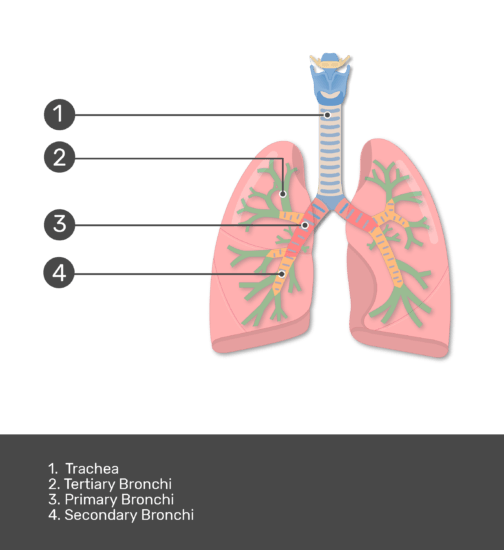
It begins at the inferior border of the larynx (cricoid cartilage) located at the level of vertebra C6. The cervical part of trachea, which is located inside the anterior visceral (pretracheal) compartment of the neck.The trachea extends between the larynx and thorax, roughly occupying the midline (slightly tilted to the left). Lastly, the most external layer is provided by the fibroelastic adventitia.

The third layer is the musculocartilaginous layer which is represented by the cartilaginous rings and intervening smooth muscle. It consists of connective tissue that contains mucus glands, smooth muscle, vessels, nerves and lymphatics. The second histological layer is the submucosa. The mucosa represents the innermost layer and it is lined with pseudostratified ciliated columnar epithelium. The trachea consists of four histological layers. The structure of its wall makes the trachea sufficiently flexible and elastic to permit the transient expansion of the esophagus during swallowing. The posterior wall of the trachea is formed by the trachealis muscle, making the cartilages appear as incomplete C-shaped rings. They support the trachea and keep it open during pressure changes that accompany air ventilation. The tracheal cartilages are composed of hyaline cartilage and interconnected by fibroelastic tissue. It consists of 16-20 tracheal cartilages anterolaterally and a fibromuscular wall posteriorly. The trachea is a D-shaped fibrocartilaginous respiratory organ. Paratracheal cervical and thoracic lymph nodesĪir transport in and out of the lungs protection Inferior: tracheal bifurcation (level of sternal angle and upper border of vertebra T5)Īrterial: tracheal branches of inferior thyroid artery Superior: inferior end of larynx (cricoid cartilage and level of vertebra C6)

Key facts about the trachea StructureĪnterolaterally: 16-20 tracheal cartilages This article will describe the anatomy and function of the trachea. In addition, it protects the respiratory tract by warming and moistening the air and propelling foreign particles upwards towards the pharynx for expulsion. The main function of the trachea is to transport air in and out of the lungs during the act of breathing. Each main bronchus branches out into smaller intrapulmonary bronchi that supply air to the various pulmonary lobes and segments. It ends at the level of the sternal angle (T5) where it divides into two main bronchi, one for each lung. The trachea extends between the larynx and thorax, consisting of two parts cervical and thoracic. It forms the trunk of the tracheobronchial tree, or pulmonary conducting zone. The trachea, or windpipe, is a 10-11 cm long fibrocartilaginous tube of the lower respiratory tract.


 0 kommentar(er)
0 kommentar(er)
